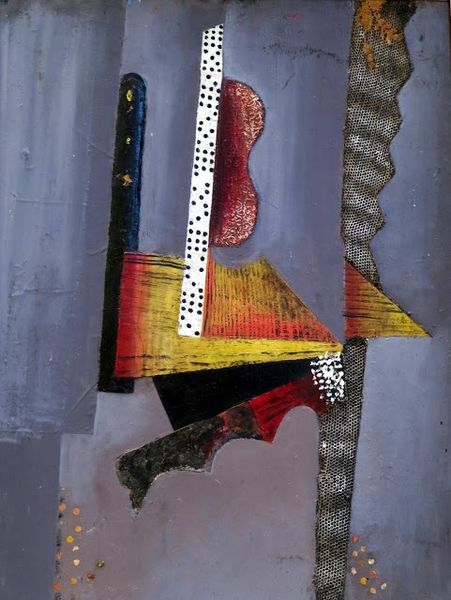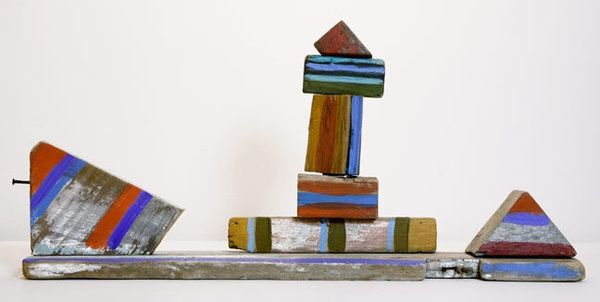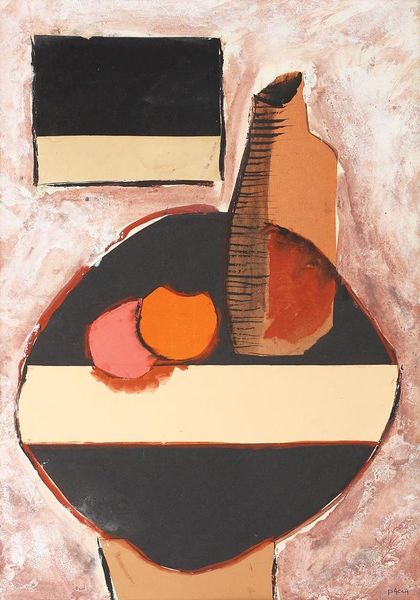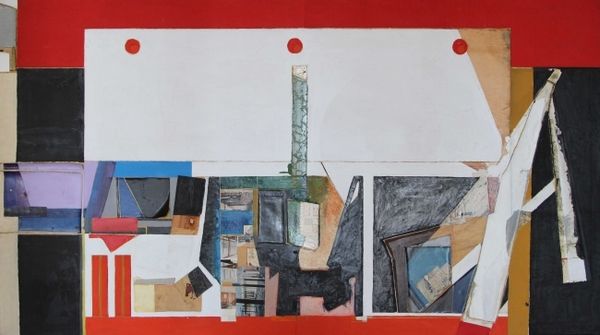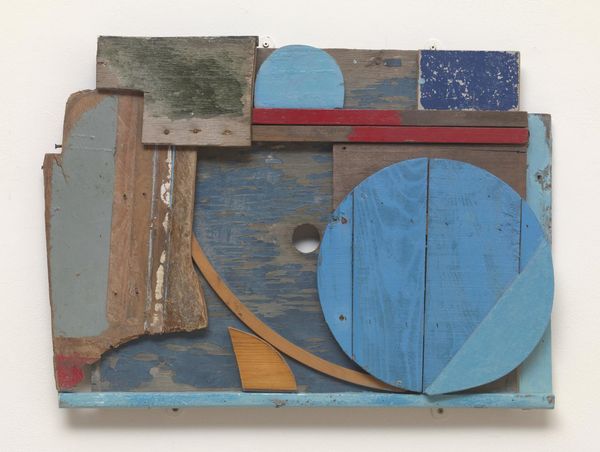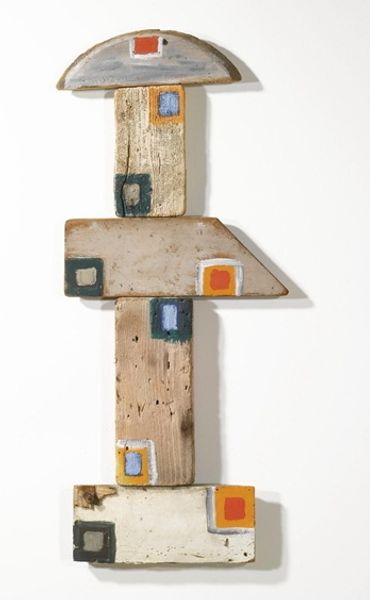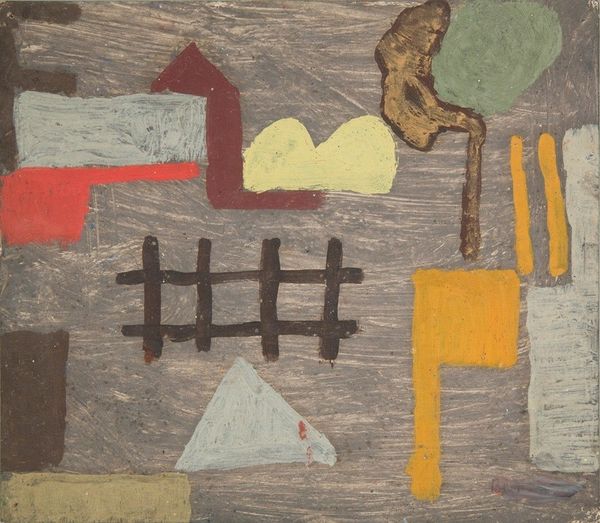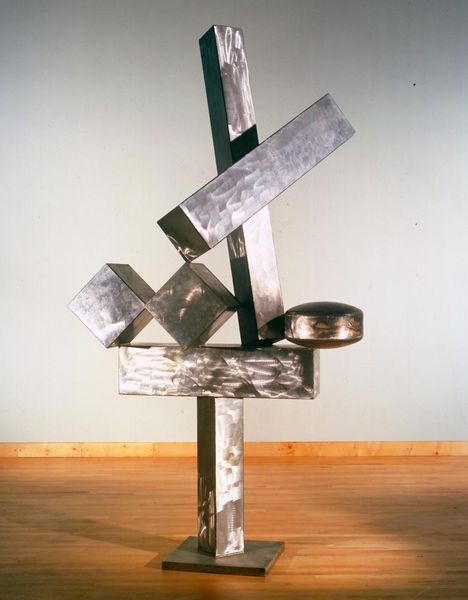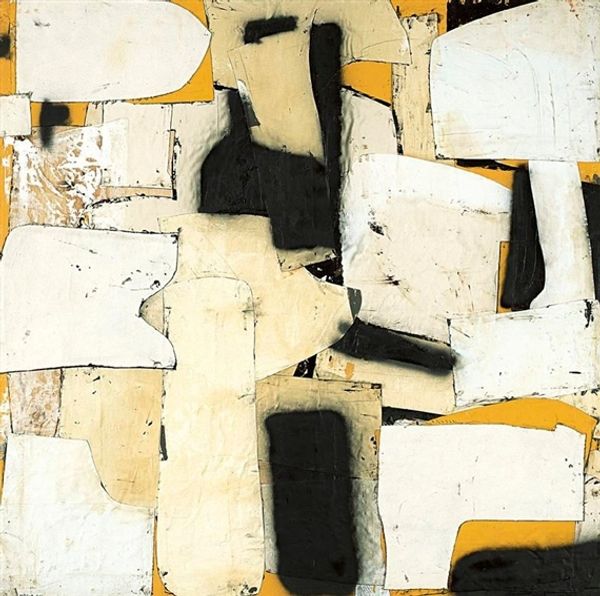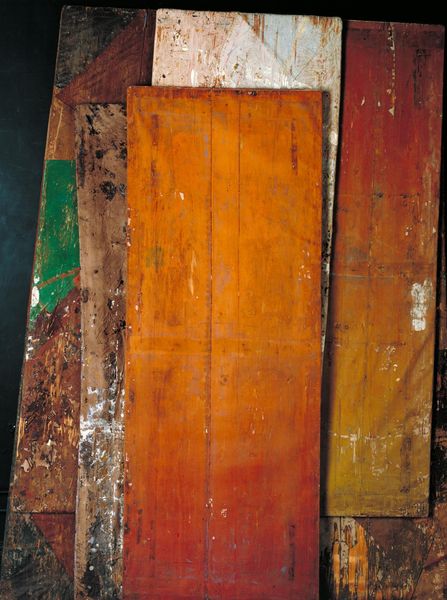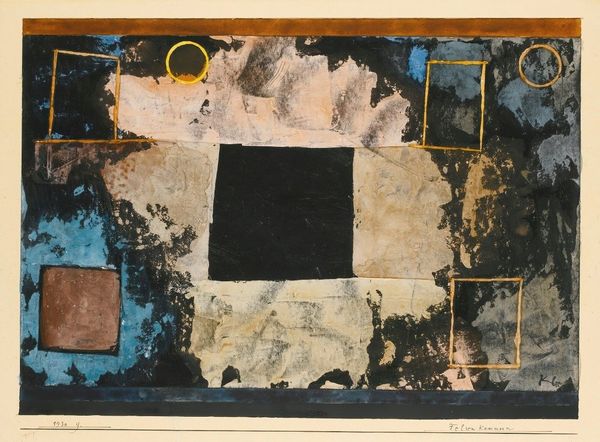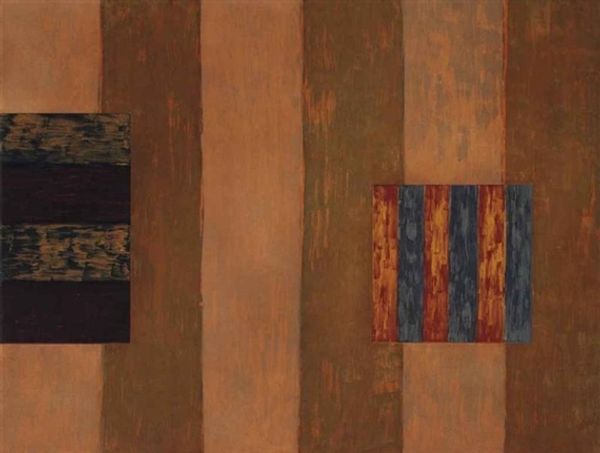
Dimensions: object: 368 x 241 x 73 mm
Copyright: © ADAGP, Paris and DACS, London 2014 | CC-BY-NC-ND 4.0 DEED, Photo: Tate
Curator: What strikes me immediately about Iwan Puni's "Relief," currently held at the Tate, is its rather somber mood given the playful arrangement of shapes. Editor: The materiality of the found objects really speaks to a moment of resource scarcity, perhaps a post-war reflection on consumption and repurposing, don't you think? Curator: Perhaps, but the jutting angles and bold colors – that cobalt semicircle particularly – feel defiant, almost like a child asserting joy amidst the scraps of a broken world. Editor: Interesting take! It's easy to look at the construction itself – how Puni affixed these disparate elements – and see a commentary on labor, the physical act of making as a statement itself. Curator: For me it’s as if each shape is a fragment of a memory, pieced together to create a whole that is both familiar and utterly strange. Editor: Well, I'm leaving here today with a reinforced appreciation for the art and how it challenges the boundaries between "art" and "craft." Curator: And I with a renewed belief in the power of art to find beauty in the broken.
Comments
Join the conversation
Join millions of artists and users on Artera today and experience the ultimate creative platform.
tate 7 months ago
⋮
Inspired by the introduction of real materials in Cubist collage, Puni created relief constructions that combined found elements into abstract painterly compositions. He was closely associated with Kazimir Malevich and was a co-author and signatory of the Suprematist Manifesto of 1916, which proclaimed a new type of abstract art for a new era in history: ‘…it is absurd to force our age into the old forms of a bygone age. The hollow of the past cannot contain the gigantic constructions and movement of our life.’ Gallery label, January 2016
